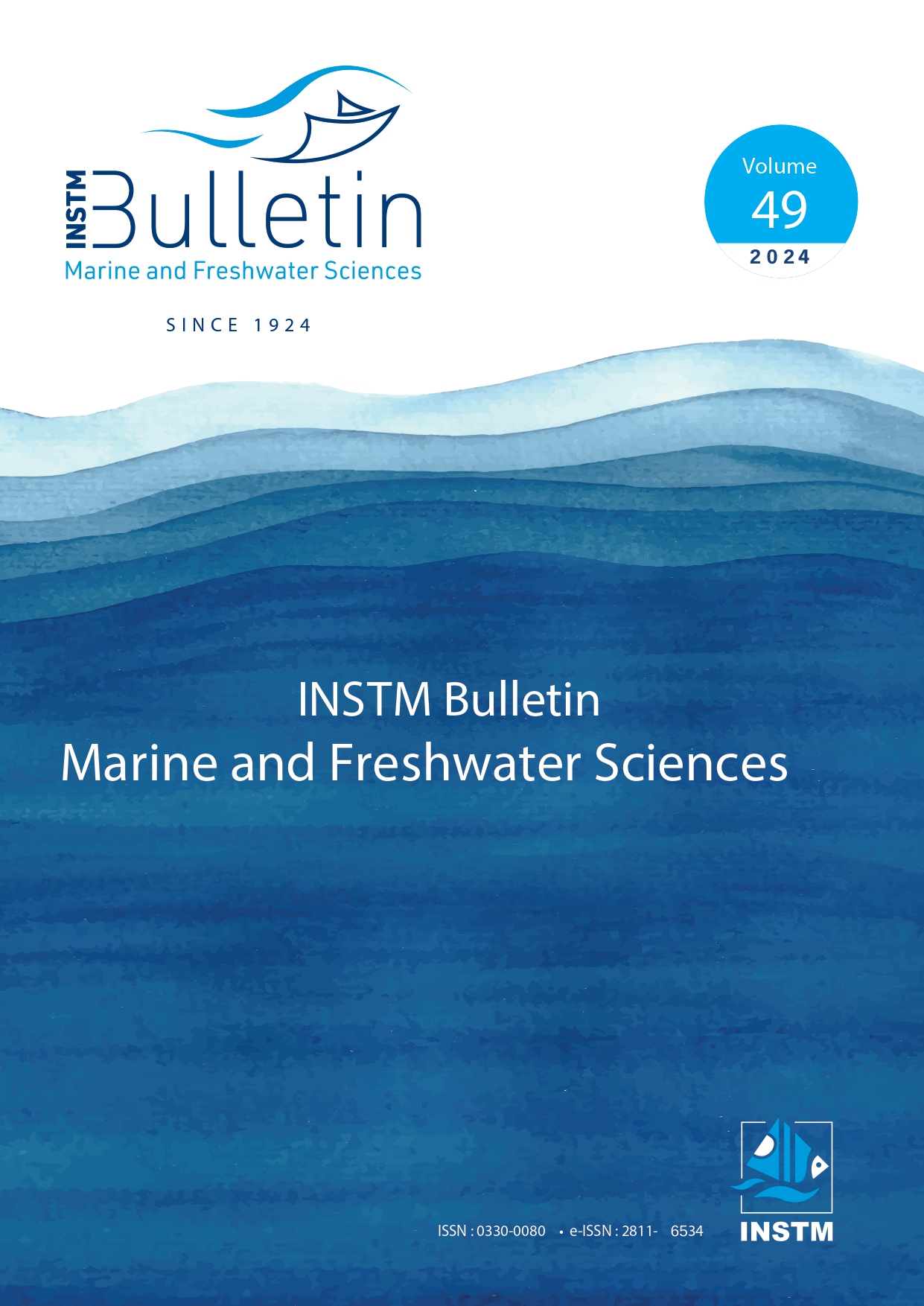Enzymatic and antioxidant properties of bacterial symbionts of the sea cucumber Holothuria forskali
DOI:
https://doi.org/10.71754/instm.bulletin.v49.1711Keywords:
Bacteria, symbionts, Biodiversity, antioxidant, intestinesAbstract
In several countries around the world, the sea cucumber fishery is currently in danger in view of the increasing demand for their nutritional benefits. Study associated bacteria provide a better understanding of sea cucumber biology, potential threats to its survival and root-active biomolecules synthesis.
In the present work, we investigated the biotechnological potential of symbiotic bacteria associated with the intestine of the sea cucumber, Holothuria forskali. An important diversity was revealed with the isolation of 143 bacterial isolates on Zobell agar medium. The study of the Internal Transcribed Spacer (ITS) of the strains collection shows 19 different haplotypes. Molecular identification by 16S gene sequencing permitted the affiliation of the symbiotic bacteria of the holothurian intestine to the Vibrio, Halomonas, Pseudomonas, Staphylococcus and Bacillus genera. Particularly Vibrio and Bacillus strains exhibited the greatest amylase, protease, cellulase, esterase, and agarase activity, which reflects their involvement in the degradation of several polymers inside the cucumber tract.
The supernatant of these bacteria also shows an important ROS (reactive oxygen species) scavenging ability, exceeding 80% in some Bacillus strains. To confirm the safety and effectiveness of these strains in vivo, further studies are needed.
Downloads
Downloads
Published
How to Cite
Issue
Section
License
Copyright (c) 2024 Khaoula TELAHIGUE , Khaled EL MNASRI, Imen RABEH , Samira BEN ROMDHANE, Cherifa TISSAOUI, Mariem KHARROUBI, Ahmed Slaheddine MASMOUDI, Lassaad CHOUBA , Tarek HAJJI

This work is licensed under a Creative Commons Attribution 4.0 International License.












